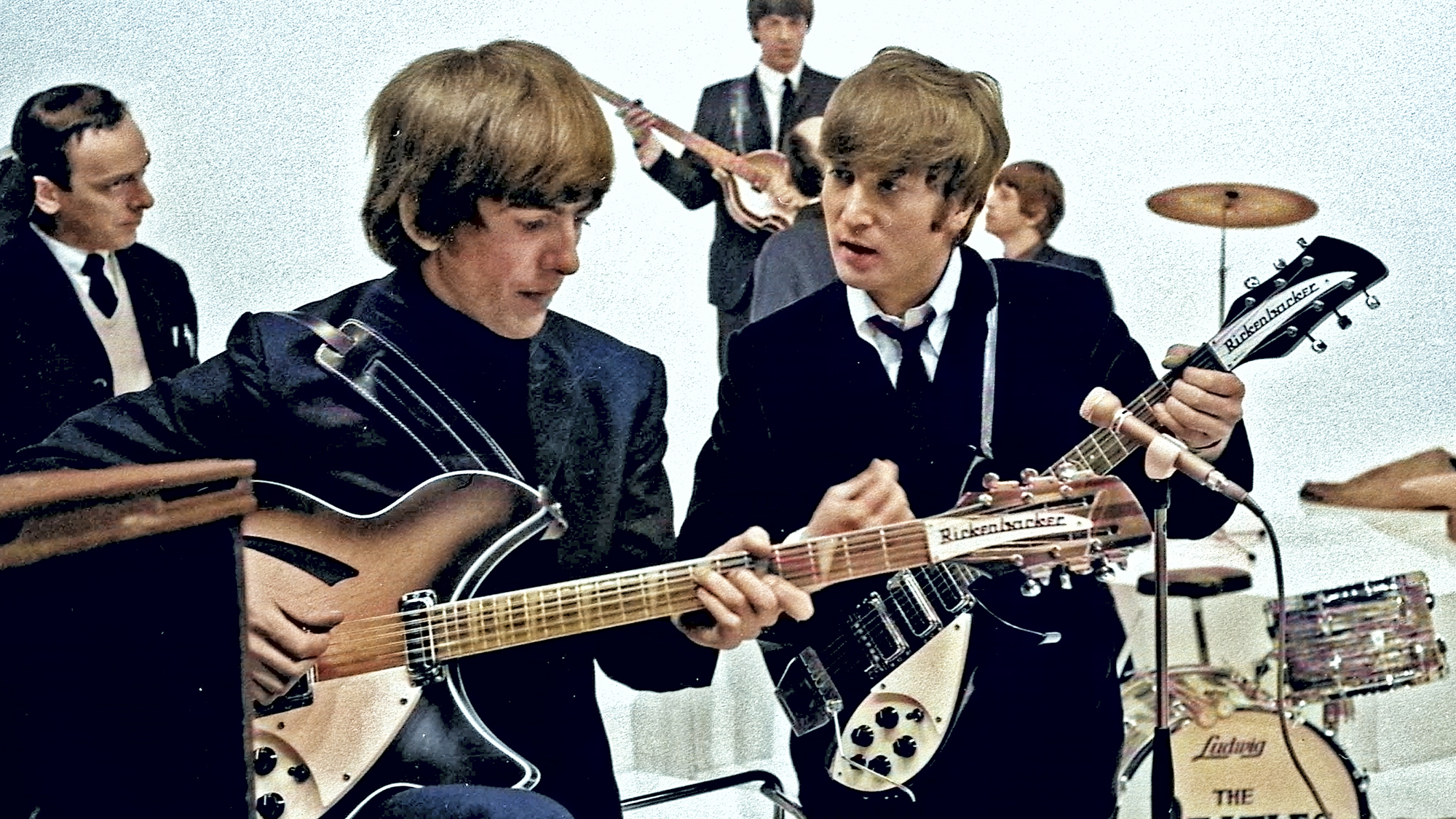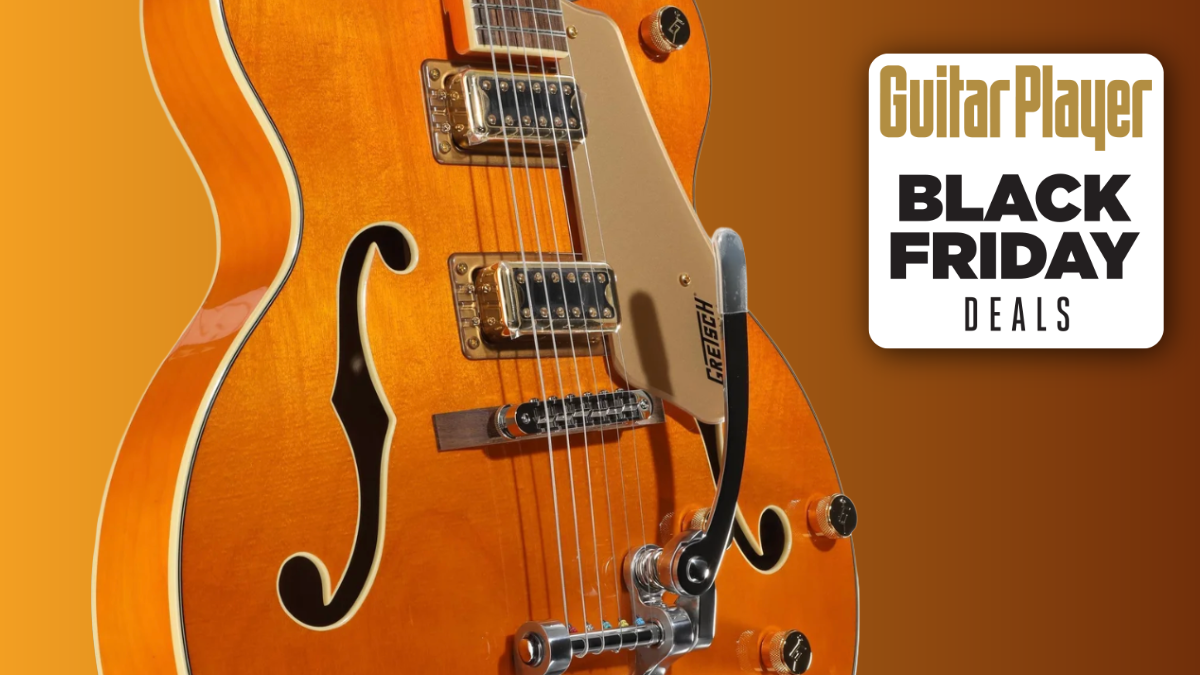"John sounded like Django Reinhardt. It was one of them where you just close your eyes and happen to hit all the right notes.” George Harrison on the John Lennon guitar solo he called his best on the Beatles’ recordings
Though primarily a rhythm guitarist, Lennon had a few standout moments as a soloist

John Lennon was well aware of his limitations as a guitarist. When asked how he rated himself during a December 1970 interview with Rolling Stone, he didn't hesitate or waffle.
“Well, it depends on what kind of guitarist,” he replied. “I’m okay. I’m not technically good, but I can make it fucking howl and move.
“I was rhythm guitarist. It’s an important job. I can make a band drive.”
There’s no denying Lennon’s rhythm guitar talents. From his chord voicings to his impeccable timing and sense of dynamics, he combined the skills, knowledge and drive that made him one of rock’s greatest rhythm guitarists.
One of his standout moments comes early in the Beatles’ catalog, on 1963’s “All My Loving,” where he pushes the verses along with steady triplet strumming. He does it while flawlessly navigating chord changes every measure on his 1958 Rickenbacker 325 Capri electric, making for a remarkable show of stamina and precision.
In his 1980 Playboy interview, Lennon called the song “a damn good piece of work,” before adding, “but I play a pretty mean guitar in back.”
For all his rhythm work in the Beatles, Lennon played only a few guitar solos. They include the first solo in “Yer Blues,” the lap-steel slide work on “For You Blue,” the bluesy solo breaks on “Get Back,” and the third, sixth and ninth solos on “The End,” among a few others.
All the latest guitar news, interviews, lessons, reviews, deals and more, direct to your inbox!
But there’s one solo of his that impressed Beatles guitarist George Harrison above the others. And it’s not even on a rock and roll track — it’s on one of Paul McCartney’s so-called “granny" songs, as Lennon dubbed his songwriting partner’s old-timey tunes.
The solo is on “Honey Pie,” from the Beatles’ White Album. It’s brief — just four measures — but, stylistically, it’s right on the money.
"John played a brilliant solo on ‘Honey Pie,’" Harrison told Guitar Player editor-at-large Dan Forte during his celebrated interview in our November 1987 issue.
"Sounded like Django Reinhardt or something. It was one of them where you just close your eyes and happen to hit all the right notes — sounded like a little jazz solo."
What's more, Lennon plays all the electric guitars on the song, almost certainly using his Epiphone Casino as he navigates the jazzy chords that hearken back to Britain’s music hall tradition, something with which Lennon had more than a passing familiarity.
His rhythm work is, as you would expect, flawless, and his chord knowledge is on display as he comps along up and down the guitar’s neck.
“Both John and I had a great love for music hall, what the Americans call vaudeville,” McCartney said in his Barry Miles cowrite Many Years From Now. “I very much liked that old crooner style, the strange fruity voice that they used, so ‘Honey Pie' was me writing one of them to an imaginary woman, across the ocean, on the silver screen, who was called ‘Honey Pie.’
“So it's not a parody, it's a nod to the vaudeville tradition that I was raised on “
It’s probably safe to say Lennon wasn’t fond of “Honey Pie,” given his dislike of McCartney’s old-fangled tunes. But we do know he preferred his style of guitar playing to Harrison’s. When Rolling Stone asked in that same interview what he thought of his former Beatle as a guitarist, Lennon quipped, “He’s pretty good. I prefer myself.”
Christopher Scapelliti is editor-in-chief of GuitarPlayer.com and the former editor of Guitar Player, the world’s longest-running guitar magazine, founded in 1967. In his extensive career, he has authored in-depth interviews with such guitarists as Pete Townshend, Slash, Billy Corgan, Jack White, Elvis Costello and Todd Rundgren, and audio professionals including Beatles engineers Geoff Emerick and Ken Scott. He is the co-author of Guitar Aficionado: The Collections: The Most Famous, Rare, and Valuable Guitars in the World, a founding editor of Guitar Aficionado magazine, and a former editor with Guitar World, Guitar for the Practicing Musician and Maximum Guitar. Apart from guitars, he maintains a collection of more than 30 vintage analog synthesizers.

